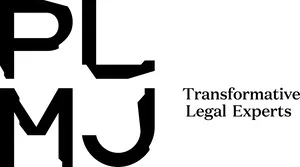- within Environment topic(s)
- in European Union
- within Environment topic(s)
- within Environment, Law Department Performance, Litigation and Mediation & Arbitration topic(s)
- in European Union
Regulation (EU) 2024/3012 of the European Parliament and of the Council of 27 November 2024 entered into force on 26 December 2024 ("Regulation"). The Regulation establishes a European Union ("EU") certification framework for permanent carbon removals, carbon farming and carbon storage in products 1.
This Informative Note provides a practical and objective summary of this Regulation.
1. What are the objectives of the Regulation?
The aim of the Regulation is to establish harmonised rules in the EU for carbon credit certification schemes (also known as carbon markets) to ensure that they:
- Issue carbon credits that reflect actual and verifiable removals or reductions in soil emissions
- Ensure transparency and trust in carbon markets through disclosure requirements and interoperability between their platforms, avoiding double counting of credits
- Ensure environmental integrity by promoting associated biodiversity benefits while avoiding greenwashing
The Regulation is voluntary, so there may be carbon markets that choose not to fall within the scope of the new European rules. However, it is likely that the demand side of these markets will move towards favouring credits issued under the Regulation. This is because credibility will be key to the growth of this market, and carbon removal/reduction tokens that comply with the standardised rules will benefit from enhanced credibility.
2. What is the Regulation's certification framework?
The certification framework provided for in the Regulation does not concern the carbon credits themselves (referred to as "certified units" in the Regulation), but the certification frameworks (carbon markets) under which they are issued and registered.
Certification frameworks for carbon credits are recognised by a decision of the European Commission. This decision assesses whether the rules of the market are such as to guarantee that the carbon projects and carbon credits that enter it meet the criteria of the Regulation and therefore deserve to benefit from the credibility factor associated with it.
The frameworks will be required to submit annual reports to the Commission. Certification is valid for five years and must be renewed with the Commission.
The Regulation's schematic certification chain, from the Commission to each carbon credit, is intended to ensure the quality of these climate change instruments within the EU.
It is likely that the demand side of these markets will move towards favouring credits issued under the Regulation.
Footnote
1. See information on the predecessors of this Regulation. "Voluntary offset markets for carbon (and other GHGs)", "Voluntary carbon markets in Portugal and the European Union" and "The new portuguese voluntary carbon market law" .
To view the full article, click here.
The content of this article is intended to provide a general guide to the subject matter. Specialist advice should be sought about your specific circumstances.




